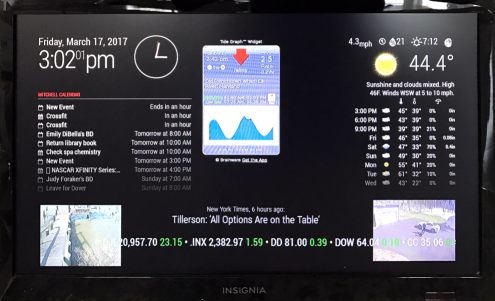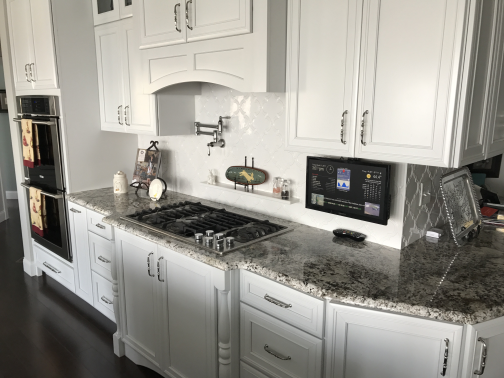Read the statement by Michael Teeuw here.
-=]!Show Your Module Setup![=-
-
This post is deleted! -
This post is deleted! -
@johnnyboy said in -=]!Show Your Module Setup

-
@Mitch1138 - forgot to add the modules:
module: ‘calendar’, (wife and mine)
position: ‘top_left’,module: ‘newsfeed’ (new york times)
position: ‘bottom_bar’,module: ‘MMM-WunderGround’ (my personal weather station)
position: ‘top_right’,module: ‘stocks’,
position: ‘bottom_bar’,module: ‘iFrame’ - Tides
position: ‘top_center’
url: "http://tides.tidegraph.com/…module: ‘iFrame’,
position: ‘top_right’,
IP camera 1module: ‘iFrame’,
position: ‘top_left’
IP Camera 2 -
That’s hot! :thumbsup_tone1:
-
looks pretty good
-
Really like the 2 IP camera’s idea… ;-)
-
@Mitch1138 Great job! I have a plan when I get to my next house to build something similar. Have you played with the CSS code to make it more eye-catching? Perhaps something like what @dinkybluebug245 did with his display here?
-
@lucallmon Thanks for the idea, I will look into it. Always a work in progress!
